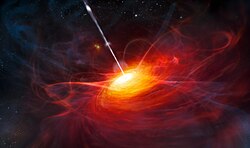Planetary system

On December 20, 2011, the Kepler Space Telescope team reported the discovery of a five-planet system containing three small gas giants and the first two Earth-sized extrasolar planets, Kepler-20e (the first known extrasolar planet smaller than Earth orbiting a main-sequence star) [11] and Kepler-20f, orbiting a Sun-like star. [12] Although the planets are Earth-sized, they are not Earth-like in the respect that they are much closer to their star than Earth, and are hence not near the habitable zone, [13] with expected surface temperatures of 760 °C (1,400 °F) and 427 °C (801 °F), respectively. The three other Neptune-sized planets in the system, Kepler-20b, Kepler-20c, and Kepler-20d, all orbit similarly close to the star. [14] [15]
Only upper limits on the masses of e and f are known. Their masses are uncertain as they are too small to detect via radial velocity with current technology. [9] As of 2023 [update] , Kepler-20e is known to be less massive than Earth. [5]
A 2016 study detected a sixth planet in the system based on radial velocity observations. Kepler-20g may be a non-transiting Neptunian world. [16] However, the existence of this planet was challenged in 2019, [17] and a non-detection was reported in 2023. [5] Another 2023 study listed this planet, though the data used was identical to the 2016 study except for the addition of a single data point, and the dispute was not addressed. [18] : 24
All planets are at small near resonances; proceeding outwards, they are 3:2, 4:2, 2:1, 4:1. The planetary orbits in current form are highly sensitive to perturbations caused by outer planets, therefore assuming stability, no additional gas giant planets can be located closer than 30 AU from the parent star. [19]
| Companion (in order from star) | Mass | Semimajor axis (AU) | Orbital period (days) | Eccentricity | Inclination | Radius |
|---|---|---|---|---|---|---|
| b | 9.7±1.3 M🜨 | 0.04565±0.00089 | 3.6961049(16) | <0.083 | 87.36+0.22 −1.6 ° | 1.773+0.053 −0.030 R🜨 |
| e | <0.76 M🜨 | 0.0637±0.0012 | 6.0984882(99) | <0.092 | 87.63+1.1 −0.13 ° | 0.821±0.022 R🜨 |
| c | 11.1±2.1 M🜨 | 0.0936±0.0018 | 10.8540774(21) | <0.076 | 89.815+0.036 −0.63 ° | 2.894+0.036 −0.033 R🜨 |
| f | <1.4 M🜨 | 0.1387±0.0027 | 19.578328(48) | <0.094 | 88.788+0.43 −0.072 ° | 0.952+0.047 −0.087 R🜨 |
| g(disputed) | ≥19.96+3.08 −3.61 M🜨 | 0.2055+0.0022 −0.0021 | 34.940+0.038 −0.035 | ≤0.16 | — | — |
| d | 13.4+3.7 −3.6 M🜨 | 0.3474±0.0067 | 77.611455(96) | <0.082 | 89.708+0.17 −0.053 ° | 2.606+0.053 −0.039 R🜨 |


